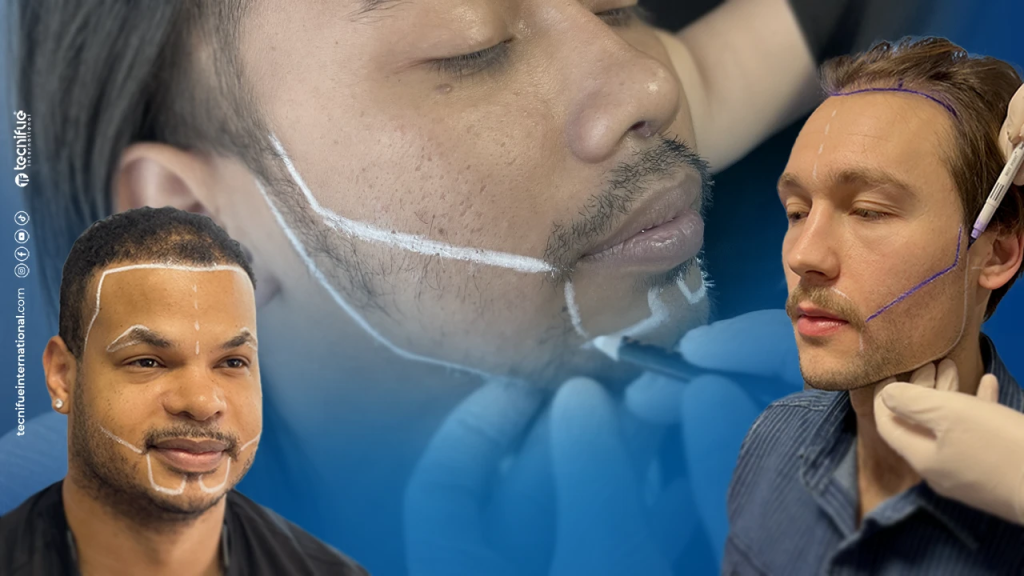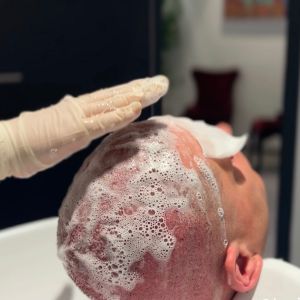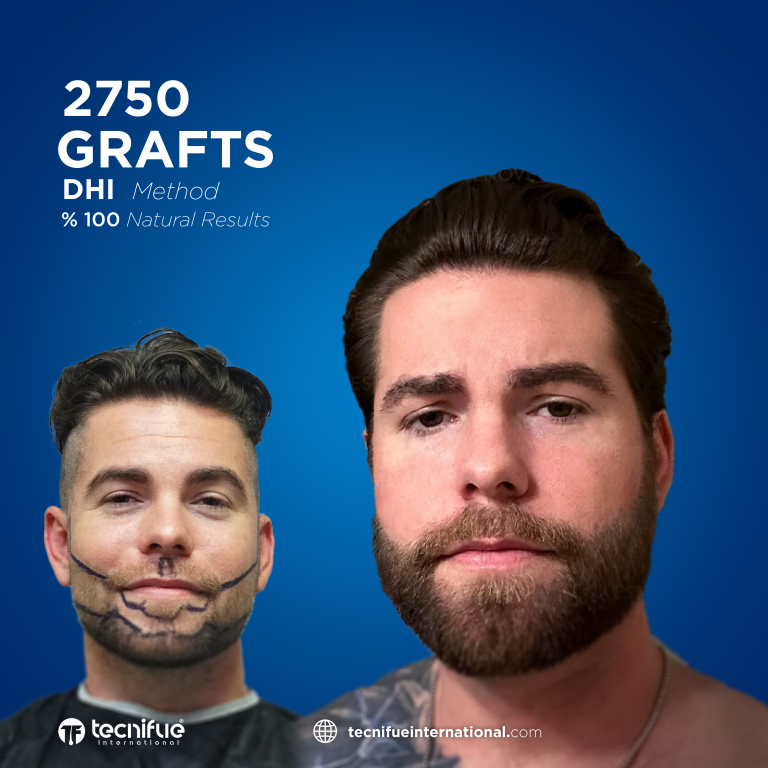Overview
ToggleBeard Transplant in Turkey has been a very popular procedure for many years. Hair and beard are considered a man’s only makeup, which is why having a well-shaped and dense beard is important.
More and more men are traveling to Turkey, especially Istanbul, to undergo a beard transplant.
Beyond its aesthetic and trendy aspect, a beard can also conceal burn scars for people who have suffered unfortunate accidents.
A beard transplant in Turkey may seem like a simple operation, but it is important to emphasize that the selection of grafts, their placement, and angles are essential to achieve a natural result. Not all clinics specialize in beard transplantation. Before making your choice, we recommend conducting thorough research.

At TecniFUE International, we put our expertise at your service to support you at every step of your beard transplant.
Feel free to check out our articles, such as Medical Tourism in Turkey and Expert Tips for Hair Transplant in Turkey, to better guide your research if you are considering this procedure.
Beard & Mustache Transplant
Patient testimonials
How is a Beard Transplant Performed in Turkey?
A beard transplant in Turkey is a cosmetic procedure performed under local anesthesia. It involves harvesting grafts from the back of the head to implant them in the beard area, with the goal of improving its shape and density.
Two important points require special attention:
Single-hair grafts: The harvested grafts may contain 1, 2, or 3 hairs. Single-hair grafts should be used on the edges of the beard to achieve a natural look.
Direction of implantation: The beard transplant in Turkey must respect a precise angle to ensure a natural appearance. If you already have a beard, the existing hair growth direction should be followed. In the absence of any beard, the grafts must be implanted to recreate a natural look.
A beard transplant requires between 1,000 and 4,000 grafts, depending on the shape of the face, desired density, and the area to be treated. This procedure can be performed without shaving the existing beard.

The operation, which lasts between 3 and 7 hours depending on the number of grafts, is performed under local anesthesia.
1 – Local anesthesia is administered to the donor area at the back of the head to ensure a pain-free procedure.
2 – Grafts are extracted using the FUE method (Follicular Unit Extraction).
3 – After local anesthesia is applied to the beard area, the harvested grafts are implanted according to your needs, using one of the two following techniques: DHI (Direct Hair Implantation) or Sapphire FUE. Other techniques, such as FUT or classic FUE (“Slit”), are not used at TecniFUE International due to their lower effectiveness and potential risks to the patient. We prioritize safe and advanced techniques.
4 – Follow-up is conducted to monitor the progress of the beard transplant in Turkey and ensure a natural and dense result.
At the end of the procedure, you can return directly to your hotel room and resume your daily life normally.

Why choose the TecniFUE International clinic?
Our clinic is located in Istanbul, and since 2012 we have been assisting our patients with their beard transplant project in Turkey.
- Surgeon and nurses experienced in beard transplants
- One of Turkey's best beard transplant clinics
- Clinic just below the hotel
- Paramedics and doctors on duty 24/7 at the hotel
- All-inclusive package including accommodation in a 5-star hotel
- A French-speaking team on site for optimum support
- Complete monitoring before, during and after the operation for a perfect result
- Guaranteed results, with 99% of patients satisfied




Which technique should I choose for a beard transplant in Turkey?
Regardless of the implantation method, the extraction for a beard transplant in Turkey is always performed using the FUE method, which guarantees no visible scarring.
For implantation, patients have two options:
The DHI method (Direct Hair Implantation), the most popular technique. It involves implanting the grafts directly into the beard area using the Choi pen, without the need for prior incisions. To better understand this method, we invite you to visit our dedicated page: DHI Hair Transplant in Turkey.
The Sapphire FUE method, where after extraction, micro-incisions are made using a sapphire tool, minimizing skin damage. The grafts are then placed into these micro-channels using specialized forceps. To learn more about the Sapphire FUE method, you can visit our page: FUE Hair Transplant in Turkey.
Who is eligible for a beard transplant?
Anyone who is an adult, has a healthy donor area, and is in good overall health can receive a beard transplant in Turkey.
Beard transplantation is a common procedure with an almost zero risk, provided it is performed in a clinic that meets standards and by an experienced team.
To find out if you are eligible for a beard transplant in Turkey, our French-speaking team is available to guide you.
Feel free to contact TecniFUE International for a free assessment.

Why choose a beard transplant?
Preserving the Facial Style
Optimal Follicle Protection
Fast, discreet healing
Natural and Uniformly Densified Beard
FAQ About Beard Transplant in Turkey
Beard transplants in Turkey offer a quick recovery. Generally, the donor area is fully healed one month after the procedure. In the implanted area, patients may experience shock loss (temporary hair shedding) around one month post-operation, which is a normal part of the process. Three months after the procedure, a noticeable difference will be visible, and patients can start trimming their beard and shaping it as desired.
Yes, it is a safe procedure when performed by an experienced professional in a reputable clinic. TecniFUE International has skilled surgeons and nurses specializing in beard transplantation. Our satisfaction rate is 99%.
You can resume sports activities three weeks after the procedure. However, we recommend a gradual return at first. Sports involving direct contact with the face, such as combat sports, should be avoided for three months.




